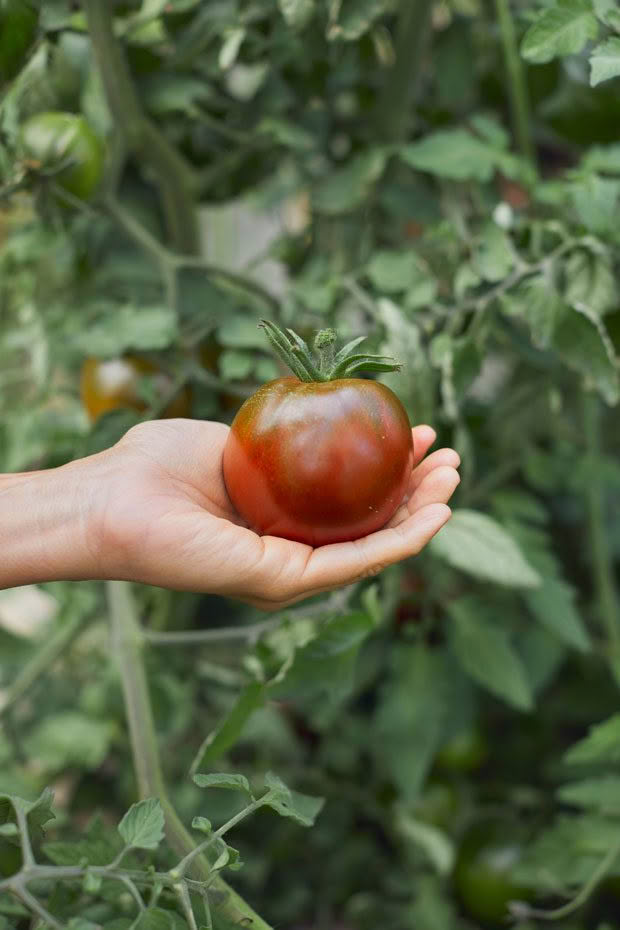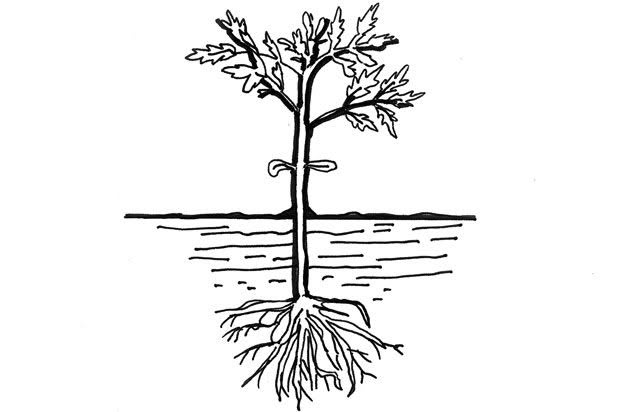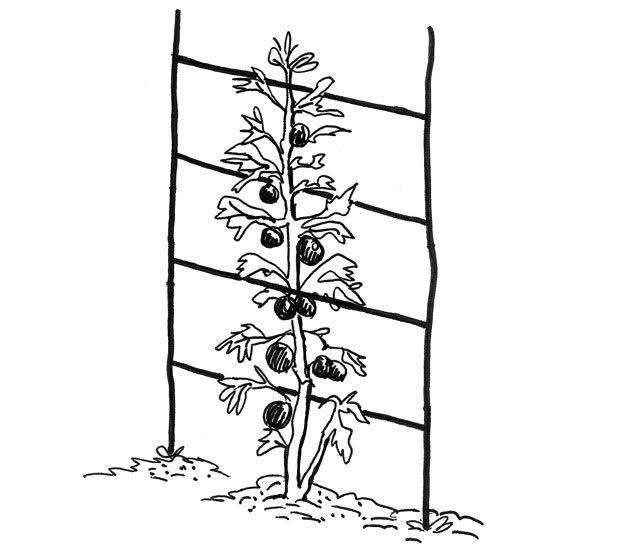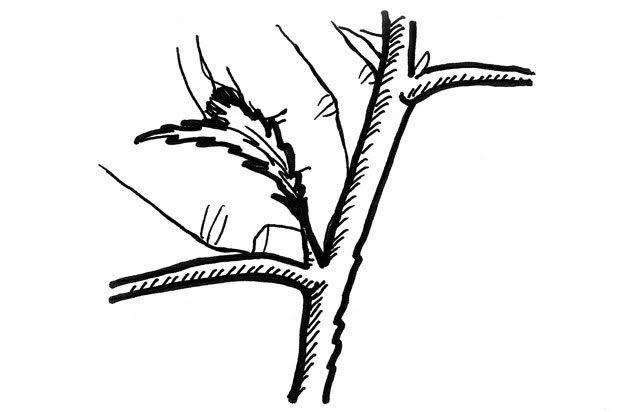6 basics to remember when growing tomatoes

If you’re going for a fruitful tomato harvest, keep these six things in mind.
Words: Extract from Nadia: A Seasonal Journal Photo: Matt Quérée
Few things are sweeter than a homegrown tomato, plucked from the vine and still warm from the sun. Here’s how to ensure a glut.
1. DIG DEEP

Plant tomato seedlings deep – to the first set of leaves – to ensure vigorous, healthy plants. Tomatoes form roots all along the buried part of the stem, which anchors the plants in place and allows them to take up water and nutrients better. Robust, healthy plants are less susceptible to drought and less prone to disease and insect attack. If seedlings are leggy, dig a trench and lay the stems sideways, gently bending the tip upwards. Cover the stem with soil up to the first set of leaves, and the tip will continue to grow vertically.
2. GIVE THEM MILK

Add a teaspoon of milk powder to planting holes when transplanting tomatoes. This gives them much-needed calcium, which helps to prevent blossom end rot. Blossom end rot occurs with too little calcium in the soil, caused by too much or too little water, insufficient calcium to begin with, or too much nitrogen. An alternative is to rinse out a milk container and pour the milky water around your plants.
3. STRING THEM UP

Use garden stakes, a tomato cage or string to support growing plants. Determinate varieties (compact plants that grow to a fixed height and fruit all at once) don’t always need staking, but indeterminate types (those that continue to climb and produce fruit throughout the season) do. A neat way to grow indeterminate tomatoes is to pinch out the laterals and grow the plants up a string in a single stem. The string hangs from a sturdy frame above (a T-post, for example) with the end secured to a garden staple near the base of the plant. Then tie the growing stems to the string, pinching off side shoots as they grow.
4. STAKE AND WEAVE

For an alternative support system, drive tall stakes between every other tomato plant and tie string to stakes horizontally, about 20cm from ground level. Wrap the string around each stake as you take it from one end to the other. Run the next row of string 15-20 above the first row. For vining tomatoes, make rows of string up the entire length of the stakes. Determinate, or bush tomatoes, need only 3-5 rows of string. Weave plants in and out of the rows of string as they grow.
5. REMOVE LATERALS

As tomato plants grow, they produce laterals, or side shoots, at the junction between the main stem and side branches. If left to grow, they will develop into another stem, with branches and fruit of its own. However, the fruit will be smaller, and the plant will become cluttered with numerous stems, reducing airflow and promoting disease. Pinch off these laterals with a thumb and forefinger – they snap off easily when bent backwards and forwards. Do this when they are still very young. If the laterals are large, prune just above the first set of leaves. If cut at the base of the lateral close to the main stem, any infection from the resulting wound will affect the whole plant. If disease results, at least it is away from the main stem.
6. ADD ZINC

Tomatoes need zinc to develop chloroplasts. Chloroplasts are sites of photosynthesis and accumulation of carbohydrates, i.e., sugars. Plants produce paler and weaker leaves that won’t turn sunlight into sugars if zinc is lacking. Applying liquid seaweed adds zinc and can improve the health and flavour of your tomatoes. Make a seaweed tea by steeping beach-gathered seaweed in water for 3-4 weeks, then apply (dilute it first) it to the soil around plants.
 This article first appeared in Nadia: A Seasonal Journal Magazine.
This article first appeared in Nadia: A Seasonal Journal Magazine.

